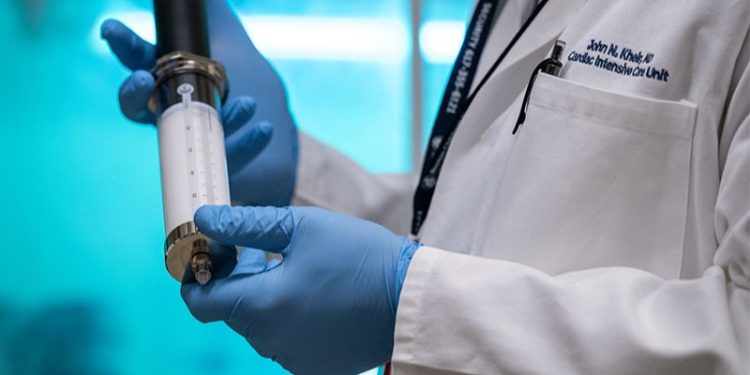Jakarta, Indonesia Sentinel — Dr. John Khier of Boston Children’s Hospital has pioneered the development of a groundbreaking treatment that delivers oxygen directly into the bloodstream for patients unable to breathe through an injection. Carried by a rapidly dissolving gas microbubble, oxygen microparticles can be injected directly into the bloodstream.
According to New Atlas, The micro-particles are created using a device called a sonicator, which uses high-frequency sound waves to mix lipids (fat molecules) with oxygen gas. The result is particles measuring just two to four micrometers in diameter, each containing an oxygen core surrounded by a lipid shell.
These oxygen micro-particles are suspended in a liquid carrier, enabling safe injection into the bloodstream. The solution carries three to four times the amount of oxygen found in regular red blood cells, meaning only small volumes are needed, depending on the patient’s oxygen requirements.
Dr. Khier’s team successfully tested the solution on lab animals suffering from oxygen deprivation. The micro-particles restored normal oxygen levels within seconds.
In tests on animals with obstructed airways, the treatment kept them alive for up to 15 minutes without breathing. Moreover, it reduced heart attacks and organ damage typically caused by oxygen deprivation.
Due to their small and flexible structure, the micro-particles can navigate tiny capillaries. Unlike injecting pure oxygen gas, which risks blood clots or embolism, the micro-particles are designed to flow safely through the circulatory system.
“This opens a door to potentially creating a controlled and predictable way of providing necessary oxygen during hypoxemia, cardiac arrest, and other shock states,” Kheir says
A Lifeline in Emergency Scenarios
The oxygen injection is intended for short-term use in emergencies, providing non-breathing patients with 15 to 30 minutes of life-saving oxygen. Dr. Khier envisions paramedics, emergency room doctors, and intensive care personnel having access to pre-prepared micro-particle solutions for immediate use.
“This is a short-term oxygen substitute—a safe way to deliver oxygen gas to stabilize patients during critical minutes,” he said. “Eventually, we hope this could be stored in syringes on code carts in hospitals, ambulances, or transport helicopters to help patients struggling to breathe.”
Yoko Ono Wins Legal Battle Over Stolen $4.4 Million John Lenon Watch
Innovation and Inspiration
Dr. Khier was inspired to explore injectable oxygen after a young patient in his care tragically died. The girl suffered a brain injury due to oxygen deprivation after severe pneumonia compromised her lungs. The devastating loss motivated him to find a solution for patients in similar situations.
Published in Science Translational Medicine, this innovation from Dr Khier and his team’s lays the foundation for future clinical trials. They are optimistic about the technology’s potential for future development.
“It’s exciting,” Kheir says. “It’s not just a potential solution for this medical issue. It’s a platform technology. There are a lot of other gases we can put in and there are a lot of other medical situations suitable for a focused amount of gas delivery. The possibilities of what we can do with a drug like this are numerous.”
With clinical trials on the horizon, Dr. Khier’s innovation holds the potential to redefine emergency care and save countless lives. As the technology evolves, it could pave the way for new medical applications, offering a glimpse into a future where oxygen deprivation is no longer a critical barrier in life-saving treatments.
(Raidi/Agung)

























